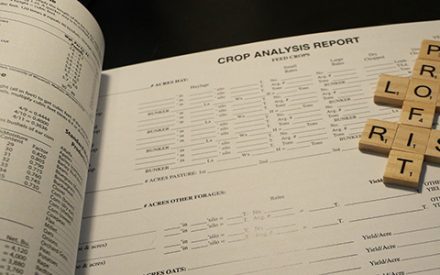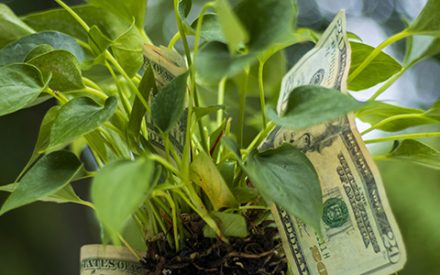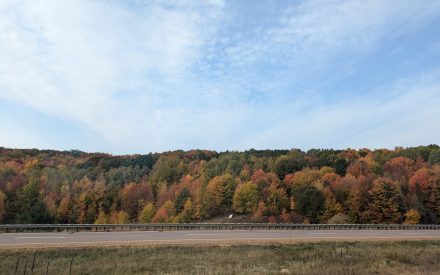Video Summary
Dr. Steven Hall, assistant professor and extension cropping systems and water quality specialist, explores how nitrate leaching responds to nitrogen inputs from both synthetic fertilizer and manure in Wisconsin cropping systems. This presentation highlights findings from resin lysimeter trials, including data from the Chippewa County NOPP site and the long-term WICST trial in Arlington.
Learn how nitrogen rates, manure application, and cropping systems influence nitrate movement through the soil and how practices like continuous living cover can help reduce leaching. This session offers valuable insights for farmers, agronomists, and conservation professionals focused on nutrient management and water quality.
Resources
- Nitrogen Optimization Pilot Program
- Wisconsin Integrated Cropping Systems Trial
- Find your Regional Crops Educator
Transcript
0:05
Thanks, Kevin.
0:06
So I’ll sort of pick up where where Jerry left off, but I’ll first provide sort of a little bit broader context about why we’re why we’re doing what we’re doing.
0:15
So, right, so Jerry gave you some great examples of, of nitrogen response curves for for corn yield, right?
0:21
Some better behaved than others, but ideally we’d see something like this, right?
0:26
You all are really familiar with that, perhaps less familiar with this idea of a nitrogen leaching response curve, right?
0:35
Which you know, in some sense we expect to be kind of the opposite of this, of this corn, this corn nitrogen response rate, this idea that you know, as we as we sort of exceed the corn plants capacity to take up nitrogen, we expect that that nitrate leaching to increase disproportionately as the infertilizer rate increases.
0:56
And so really this, this highlights the importance of dialing in our nitrogen rate, right.
1:01
We really want to optimize our yield and our economic return.
1:04
But at the same time, we want to do this thinking about sort of the broader environmental context, right, keeping our keeping our water underneath us fit to drink and sort of the challenge, right is that in many cases the nitrogen rate that might actually be most protective for water quality, right?
1:21
Thinking about that, that 10 milligrams per liter international standard that may behave a little bit differently.
1:28
And so it really we need to better understand the shape of this nitrogen leaching curve and how this how this, you know, interacts or does not right with our corn, corn yield response curve.
1:42
Okay.
1:42
And so, right, the challenge, right, there’s gazillions of these yield, yield response curves out there.
1:48
The story for nitrate leaching is there’s a lot less data out there.
1:52
And part of the challenge, it’s really hard to do this.
1:55
And I think one of the best data sets out there actually comes from from colleagues in in Iowa at Iowa State University, where they have some of these long term drainage plot experiments.
2:06
So essentially they’ve got plots with individual tile drains where they’re able to vary the nitrogen rate and look at the water that’s coming out of that tile to get at, you know, how these the how the nitrogen management influences the nitrate leaching year over year.
2:24
So this is a a figure that shows you 16 years of of those data from a corn corn beam rotation, right?
2:30
You see in any particular year, there’s there’s a lot of variability, right, a lot of spread around any of these given nitrogen application rates.
2:39
But you know, if you have enough data, you can begin to tell a story, right, consistent with that kind of non linear response of nitrate concentration to end application, right.
2:49
And so really one of the, one of the, our tasks is to figure out how these, how these shapes may or may not vary in Wisconsin cropping systems with different nutrient management and with other conservation practices potentially as well.
3:04
I think one of the, one of the challenges that we have is that unlike some of our, you know, land grant counterparts elsewhere in the Midwest, we don’t have any of these established drainage plot experiments.
3:15
And so that’s, that’s one way we, we’d hopefully like to go in, in the future.
3:19
But in the meantime, right, how else can we get a handle on this?
3:22
Well, we’re fortunate that some folks in UW soil science 20-30 years ago developed this really nice lysimeter approach that you may have heard something about.
3:33
This is known as the equilibrium tension lysimeter.
3:36
This is a way, it’s, it’s a fairly sophisticated way of capturing drainage water in a very physically realistic way.
3:44
Essentially we have boxes installed below soil where we’re applying a fixed suction to that box that’s really representative of the natural soil profile condition.
3:54
So we can get fantastic data on drainage and nitrate concentration.
3:59
Really the the challenge is that these are extremely expensive and labor intensive to actually do.
4:04
It’s, it’s difficult to envision how we could do this in the context of something like like Nopp, although, you know, we’ve had, you know, good, good luck with colleagues in Discovery Farms who have, who have done this in a number of other places across the state.
4:18
You may also be familiar with another common approach for measuring nitrate leaching.
4:23
This is known as the suction cup lysimeter.
4:26
Essentially, this is just like a tube that you stick in the soil and on the end of it, there’s typically a little porous suction cup.
4:33
And so you can apply a vacuum to that tube and you can suck some of the soil water in and you can collect it in a bottle, right?
4:41
You know, this is, this is potentially useful for getting sort of snapshots of nitrate concentrations in the soil water.
4:47
But one of the challenges is that it doesn’t really directly measure leaching, right?
4:51
You’re just getting a, getting a sense of the chemical characteristics of the soil water.
4:56
It’s also really labor intensive, right?
4:58
You know, you’ve got to go out frequently and apply the suction and, and measure the bottles.
5:03
So I think useful, but maybe it, it’s, it’s, it’s tricky to get at these questions of how nitrogen management really influences leaching.
5:12
And so an approach that we’ve been using is trying to sort of thread, thread the needle.
5:16
We call this the resin lysimeter.
5:18
So this was developed more than 20 years ago by Sussfolk and Johnson.
5:23
It’s been used by a number of other research groups around the Midwest and it’s essentially it’s an open PVC pipe with a couple of segments here.
5:32
And in the middle this is a layer of ion exchange resin.
5:36
And so this is sort of a substance that will bind on to nitrate and ammonium and other sort of charged particles in water that flows through the resin.
5:46
So here’s an example of what these what these look like, sort of, you know, one of the benefits, right?
5:51
This is, you know, relatively inexpensive.
5:53
You can install them and they sort of passively record the nitrate that leeches through.
5:58
So you can have a lot of replicates.
6:00
You can throw them out on a farm field, come back a year later and collect them.
6:03
And so it’s sort of a approach that’s that’s feasible to implement in something like NOPP.
6:09
You know, want want to highlight though some of the caveats, right?
6:12
These are noisy data sets.
6:14
Arguably, this is maybe giving us a relative value of nitrate leaching, not necessarily absolute like it’s on.
6:21
We know that when we install these little tubes in the soil, we’re altering the soil physics to some extent.
6:27
So we may not get the same kind of drainage through this lysimeter that we would under natural conditions.
6:33
We can also have really high spatial variability, right, because these are pretty small.
6:38
But you know, with those caveats accepted, right, If you get enough of these out there, maybe, maybe they’ll tell you something useful.
6:44
OK, so here’s a, a photo of, of, you know, the gang of folks installing some of these lysimeters up at the Chippewa site that Jerry was was was talking about.
6:54
This is one of our egg water colleagues, Kelsey Highland in, in a soil pit here that was excavated.
6:59
She’s carving a little pocket in the side of the pit and we install one of those lysimeters in the side, fill it back in, right?
7:07
So we have some undisturbed soil on top.
7:09
Then we fill the pit back in, come back a year later and dig, dig these guys out and extract them.
7:15
And so here’s, here’s the data, right?
7:17
And so this is the same experiment that Jerry talked about before where we’ve got this whole spectrum of synthetic nitrogen rates with and without this liquid dairy manure.
7:27
And so I’ll walk you through this figure because there’s a lot going on here.
7:31
And so on the left panel, we’ve got just our synthetic nitrogen rate.
7:35
We’ve got nitrogen leaching on the Y axis and then the synthetic nitrogen rate on the X axis.
7:42
And what you’ll notice, right, these black symbols are the individual lysimeters.
7:46
So a lot of noise as I highlighted, right.
7:49
And we sort of expect this, right?
7:50
We know there are concentrated flow paths in soil that might be picking up more of that nitrate.
7:55
If it’s moving down, you might be picking up chunks of organic matter, potentially chunks of manure, right?
8:01
If we don’t have complete uniform application, we’ve got legacies of of prior management.
8:06
But on the whole right, we see sort of what we expect this increasing relationship between nitrate leaching in both this synthetic case and the synthetic plus manure on the right.
8:18
So this turns out to be statistically significant.
8:21
We’re still playing around with different kinds of models.
8:24
I think the slope is sort of interesting.
8:26
If you look both at both of these experiments, on average the slope is about .3 when we look at the relationship between N rate and nitrate leaching.
8:36
So what does this mean on average that suggests that about 30% of this applied N is lost to leaching when we look at the experiment as a whole.
8:45
And that’s, you know, approximately about, right when we look at other kinds of studies, although there is right, eyeballing the data as we start bumping up that synthetic nitrogen rate, we do have some of this evidence for nonlinearity, right?
8:57
This makes a lot of sense.
8:59
When we really tap out on the crop demand, there’s going to be more opportunities for nitrate leaching from these hotspots, especially when we’ve added some manure nitrogen on top.
9:10
Stephen, I’m just going to interrupt.
9:12
We did get another comment in the chat here.
9:15
And if it’s easier to answer this at the end, you can elect to do that.
9:19
What the heck?
9:20
Let’s take a now the statement is analyzing the groundwater is not useful?
9:25
In the same place trial.
9:27
I’m not sure.
9:28
Yeah, so that’s that’s a great clarifying question.
9:31
So we’re not analyzing the groundwater, right.
9:33
We’re analyzing the resin lysimeter that is installed at about just just a little bit above 3 feet.
9:39
So the goal is to put this below the root zone but above the groundwater, right.
9:44
So we’re catching the nitrate that’s moving through that soil profile through the lysimeter.
9:50
That’s great.
9:50
Great.
9:50
Clarifying.
9:51
That’s what I suspected.
9:53
I’m sure the the asker will be appreciative.
9:55
Keep going.
9:56
All right, keep rolling here.
9:59
OK.
10:00
So, yeah, so on on average, right, we see a bump in this, in this manure that about corresponds with the the amount of manure nitrogen that was applied.
10:10
OK, so I thought just, you know, since I’ve got you here, I would, I would briefly fit in another one of our our trials where we’re using these resin lysimeters just to to give you some more insights about nitrogen leaching and some some of you may be familiar with WIX.
10:25
This is a long term trial down at Arlington where we’ve got a whole spread of, of cropping systems ranging from continuous corn to pasture, perennial pasture with, with grazing heifers.
10:37
So a student of mine, Hariom Yadav installed about 300 of these.
10:41
And I think that you know, the replication was really worth the effort.
10:44
These were installed during the same time period as this NOPP project.
10:49
And I bring this up because we also have some systems that are totally reliant on synthetic and then this corn alfalfa rotation where we’re applying substantial amounts of liquid dairy manure.
11:00
And just briefly to, to give you a, a snapshot of the results in this system.
11:05
Overall, we we have pretty high nitrate leaching our, our corn treatments are, are are maxing out about 80 to 90 lbs.
11:12
So both the continuous corn and the corn after alfalfa we see a bit lower during the the soybean phase of the corn soybean rotation and particularly in our second year of our alfalfa rotation, the 1st and 3rd phases are a little bit leaky.
11:28
We think with, you know, just how that how and when the manure is replied with with respect to termination of the crop on average actually the pasture had had surprisingly low nitrate leaching.
11:39
We think one of the keys here is the presence of living roots year round.
11:43
So despite the fact that there’s you know, a fair amount of nitrogen cycling happening with the animal excretion and mineralization, these systems are better able to hang on.
11:53
And so I think this one of the take homes is really sort of the importance of this as much as close as we can get to continuous living can cover to try to hang on to that nitrogen that’s, that’s moving around our, our plant soil systems.
12:06
OK, So just to, to recap what we found from this, this Chippewa NOP trial and, and the other experiment I just, I just mentioned.
12:15
So, you know, we have some good evidence right of this increase in nitrate leaching with synthetic nitrogen application rate, you know, tending toward this non linear increase as we bump that nitrogen rate higher.
12:29
You know, as near as we can tell, it seems like the manure nitrogen and the synthetic fertilizer were similarly susceptible to leaching.
12:37
And then, you know, some evidence that these systems with continuous living cover can help us put a dent into the nitrate leaching.
12:44
And so that really begs the question, well, how do we make this practical and feasible for you all to integrate, you know, cover crops, etcetera, with your, with your systems next steps, right?
12:54
We’re going to have more, more data accumulating over the years.
12:57
So stay tuned for some more measurements from, from the Chippewa site and from Wixt.
13:02
We’re still trying to dial in what these, what these resin lysimeters are actually telling us and comparing them with other methods.
13:08
And I want to highlight, there’s a, there’s a group of us that are, are working on an extension pub really focusing on nitrate leaching and how, how we can measure and understand this coming soon from the ag water program.
13:21
So just stay tuned for for that and like to particularly acknowledge Jerry for coordinating all of that lysimeter work at the Chippewa site.
13:30
That was a big lift to get this done, the many volunteers who helped out and all of the lab work that went into to analyzing those those samples.
13:39
So I will I will stop here.
Badger Crop Connect
Timely Crop Updates for Wisconsin
Second and fourth Thursdays 12:30 – 1:30 p.m.
Live via Zoom

 ▶ Fall 2025 Financial Assistance for Producers
▶ Fall 2025 Financial Assistance for Producers ▶ Fall 2025 Ag Policy Update
▶ Fall 2025 Ag Policy Update ▶ Fall 2025 Corn and Soybean Market Outlook
▶ Fall 2025 Corn and Soybean Market Outlook ▶ November 6 Ag Weather Outlook for Wisconsin
▶ November 6 Ag Weather Outlook for Wisconsin


